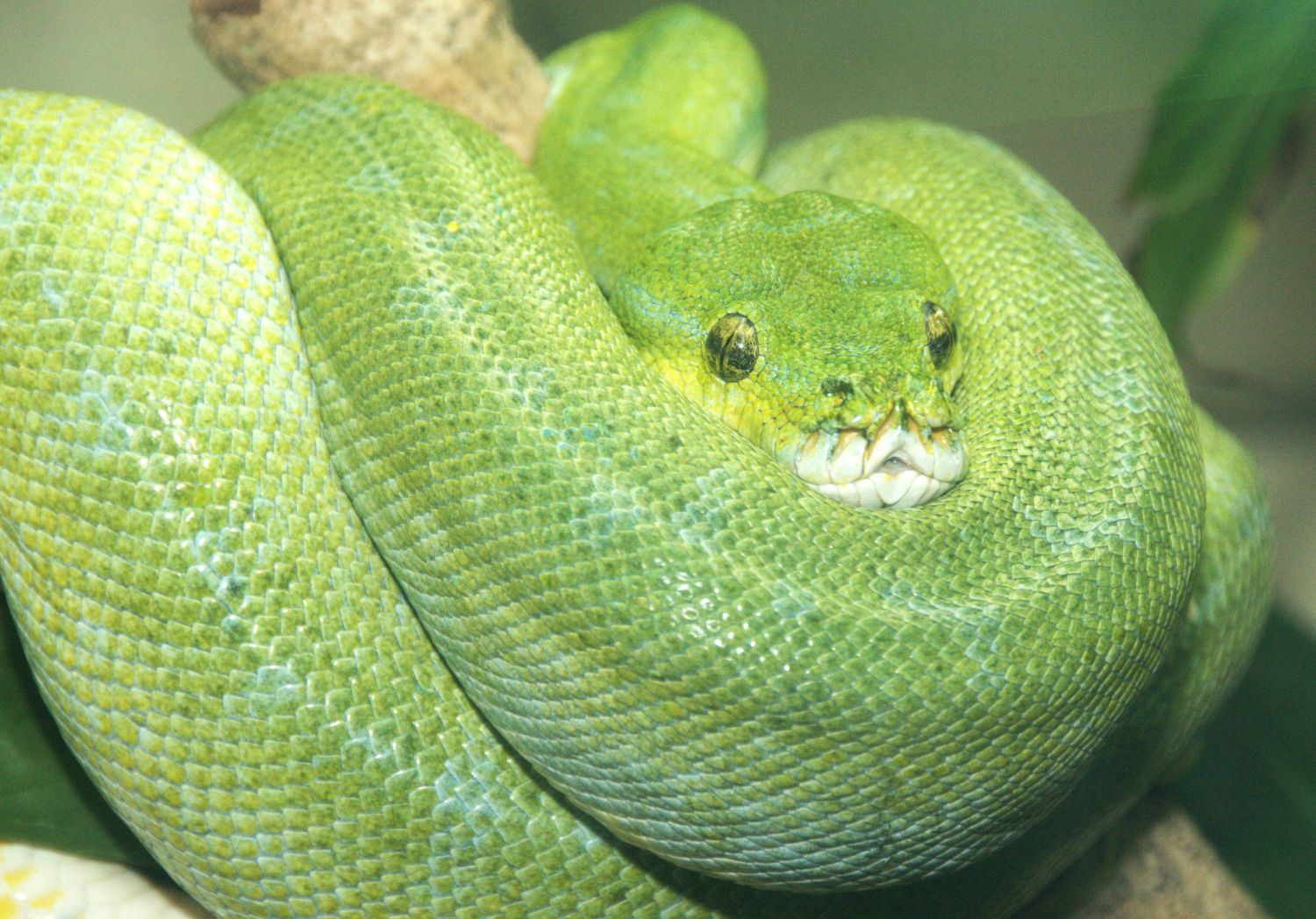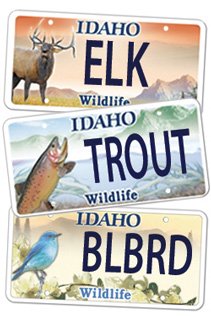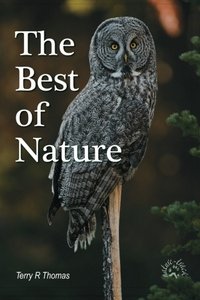Bones

©Terry R. Thomas/www.nature-track.com
Pythons have more bones than any other animal.
The winter-killed deer I stumbled onto was already not much more than hide and bones, even though it was likely only a few months dead. Ravens, worms, beetles, bacteria, and more had already consumed most of the softer tissue. The hide might last another season, but the bones could last a decade.
Make no bones about it, the inner structure we call a skeleton, is a durable framework upon which to hang the rest of us. Bones make up only about 15 percent of a human body (this varies by species), but without them, we would be nothing but gooey piles of flesh on the floor.
Besides giving structure to our soft tissues, bones help with locomotion by giving muscles attachment points to work against. Bones also store fats and minerals for later use, contain marrow which supplies red blood cells, and protect internal organs (think rib cage).
All vertebrates have bones (with one exception). Bones vary in length with the femur or thigh bone usually the longest in walking animals. The smallest bone is usually the stapes or similar inner ear bone. The longest bone in an animal is the lower jaw or mandible of a blue whale. Since the blue whale is the largest animal ever to live on this planet, that makes some sense. The smallest known bone is likely the columella (amphibian version of the stapes) of the New Guinea Amau frog, the 7.7 mm long titan of small in the vertebrate world. This bone is small enough to be undetectable without at least a hand lens or preferably, a microscope (our stapes bone is 3mm long. Just imagine the size of the columella bone of this 3/8 inch long frog).
In quadrupedal and bipedal animals, the femur is usually the strongest and often the largest bone in the body. A giraffe femur can be six feet long. An African elephant’s femur is less than four feet long, but weighs 47 pounds. Interestingly, the femur from the dinosaur, Triceratops, while the same length as an elephant’s (they were roughly the same size and weight of a large African elephant), the Triceratops femur has a circumference 2-3 times greater than that of the elephant. That is a new definition of, “big boned”.
The number of bones in an animal’s body is highly variable, depending on species. The animal with the most bones is the python, with over 1,800 bones in its slithering body. A human adult has 206 bones, but a human infant has over 300. Do these bones disappear as we mature? No, they simply fuse together, making fewer larger bones. Birds commonly have over 200 bones (again, species dependent) and amphibians have 140-200 bones.
The exception to the vertebrate/bone connection is that of sharks, rays, skates, and chimaeras. These fish all have cartilaginous skeletons instead of bones. Cartilage, like that in the tips of our noses and ears, is soft and compressible, and weighs about half what bone does. This gives these fish a lighter frame for greater speed and buoyancy, important to species without air bladders. Over time, some of the cartilage around the jaws absorbs minerals and can harden similar to bone, but there is no true bone in these species (teeth are not bones).
Everyone likely knows that birds have hollow bones and every grade school kid will tell you that the hollow bones make the birds light and able to fly. Well, that isn’t so. More on that next time.
Help Idaho Wildlife
When we traveled across the state in October 2017, we visited most of the Idaho Department of Fish and Game wildlife management areas. Most of the vehicles we saw using the wildlife management areas did not have wildlife plates. Buying wildlife plates is a great way for non-hunters and hunters alike to support wildlife-based recreation like birding.
C'mon folks, let's help Idaho's wildlife by proudly buying and displaying a wildlife license plate on each of our vehicles!
See below for information on Idaho plates. Most states have wildlife plates so if you live outside Idaho, check with your state's wildlife department or vehicle licensing division for availability of state wildlife plates where you live.
And tell them that you heard about it from Nature-track.com!

Wildlife License Plates
Great news! as of 2024, there are three NEW designs for license plates. They still are bluebird, cutthroat trout and elk, but they are beautiful.
Idaho Wildlife license plates provide essential funding that benefits the great diversity of native plants and wildlife that are not hunted, fished or trapped—over 10,000 species or 98% of Idaho’s species diversity. Game species that share the same habitats (such as elk, deer, antelope, sage-grouse, salmon, trout) also benefit from these specialty plates.
No state tax dollars are provided for wildlife diversity, conservation education and recreation programs. Neither are any revenues from the sale of hunting or fishing licenses spent on nongame species. Instead, these species depend on direct donations, federal grants, fundraising initiatives—and the Idaho Wildlife license plates.
Both my vehicles have Bluebird Plates. I prefer the bluebird because the nongame program gets 70 percent of the money from bluebird plates, but only 60 percent of the money from elk and trout plates - 10 percent of the money from elk plates supports wildlife disease monitoring and testing programs (to benefit the livestock industry) and 10 percent from cutthroat plates supports non-motorized boat access.
Incidentally, in 2014, the Idaho Legislature denied the Department of Fish and Game the ability to add new plates or even to change the name of the elk and cutthroat plates (very specific) to wildlife and fish plates, a move that would have allowed for changing images occasionally and generating more revenue. It would seem that they believe that we Idahoans don't want a well funded wildlife program.
I think it is time we let the Legislature know that Idahoan support wildlife funding and that we would like to see these generic plates come to fruition.

"WOW. What a phenomenal piece you wrote. You are amazing." Jennifer Jackson
That is embarrassing, but actually a fairly typical response to my nature essays. Since The Best of Nature is created from the very best of 16 years of these nature essays published weekly in the Idaho Falls Post Register (online readership 70,000), it is a fine read. It covers a wide variety of topics including humorous glimpses of nature, philosophy, natural history, and conservation. Readers praise the style, breadth of subject matter and my ability to communicate complex and emotional topics in a relaxed and understandable manner.
Everyone can find something to love in this book. From teenagers to octogenarians, from the coffee shop to the school room, these nature essays are widely read and enjoyed.
Some of the essays here are my personal favorites, others seemed to strike a chord with readers. Most have an important message or lesson that will resonate with you. They are written with a goal to simultaneously entertain and educate about the wonderful workings of nature. Some will make you laugh out loud and others will bring a tear to the eye and warm your heart.
Readers Write:
"You hit a home run with your article on, Big Questions in Nature. It should be required reading for everyone who has lost touch with nature...great job!" Joe Chapman
"We enjoyed your column, Bloom Where Planted. Some of the best writing yet. The Post Register is fortunate to have your weekly columns." Lou Griffin.
To read more and to order a copy, click here or get the Kindle version
Copies are also available at:
Post Register
Island Park Builders Supply (upstairs)
Barnes and Noble in Idaho Falls
Harriman State Park, Island Park
Museum of Idaho
Valley Books, Jackson Wyoming
Avocet Corner Bookstore, Bear River National Wildlife Refuge, Brigham City, Utah
Craters of the Moon National Monument Bookstore, Arco, Idaho